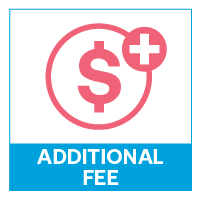Back
Short Courses
Sunday Short Courses: Full Day
Data Analytics with KNIME (Laptop Required)
Sunday, February 6, 2022
8:30 AM – 4:30 PM
Location: 104A

Marc Bickle, Dr. (he/him/his)
Head Organoid Phenotyping
Roche, Basel-Stadt, Switzerland
Additional Fees Apply
-- visit the Short Course Program section for more information.
This one day, hands-on course will introduce the use of the open source software KNIME for data analysis and data visualization. KNIME does not require any programming skills as the user interacts with data by building in a graphical interface pipelines of nodes each executing a separate step. This allows to interact with data in a much more natural way than with scripting languages and facilitates the analytical process. The graphical interface allows users to easily explore their data and test different analytical methods. KNIME allows scientists with no programming skill to apply advanced statistical methods to their data. KNIME integrates several programming languages allowing novel or domain-specific algorithms to be integrated into graphical workflows. Data scientists and bioinformaticians developing analytical solutions for non-coders can therefore implement cutting-edge algorithm that can still be easily executed by their users. Data scientists and bioinformaticians can therefore concentrate on solving new problems instead of executing code for their users.
The course comprises two parts. In the morning, students will be taught the basics of KNIME, how to load data, select rows and columns, aggregate data and some visualization techniques. In the afternoon, an introduction into multi variate analysis using KNIME will be given. Students will be taught how to calculate various correlations, normalize data, cluster data and use machine learning to analyze biological data. Students are strongly encouraged to bring their own data, as at the end of the day they will have the occasion to start an analysis pipeline on their own.
Who Should Attend:
How You Will Benefit From This Course?
Course Topics:
-- visit the Short Course Program section for more information.
This one day, hands-on course will introduce the use of the open source software KNIME for data analysis and data visualization. KNIME does not require any programming skills as the user interacts with data by building in a graphical interface pipelines of nodes each executing a separate step. This allows to interact with data in a much more natural way than with scripting languages and facilitates the analytical process. The graphical interface allows users to easily explore their data and test different analytical methods. KNIME allows scientists with no programming skill to apply advanced statistical methods to their data. KNIME integrates several programming languages allowing novel or domain-specific algorithms to be integrated into graphical workflows. Data scientists and bioinformaticians developing analytical solutions for non-coders can therefore implement cutting-edge algorithm that can still be easily executed by their users. Data scientists and bioinformaticians can therefore concentrate on solving new problems instead of executing code for their users.
The course comprises two parts. In the morning, students will be taught the basics of KNIME, how to load data, select rows and columns, aggregate data and some visualization techniques. In the afternoon, an introduction into multi variate analysis using KNIME will be given. Students will be taught how to calculate various correlations, normalize data, cluster data and use machine learning to analyze biological data. Students are strongly encouraged to bring their own data, as at the end of the day they will have the occasion to start an analysis pipeline on their own.
Who Should Attend:
- Biologists with no programming skills who want to analyze and visualize their data.
- Data scientists and bioinformaticians who want to distribute analytical pipelines with collaborators with no programming skills.
How You Will Benefit From This Course?
- With the KNIME skills acquired, participants will be able to analyze, visualize and summarize their data in ways that would normally require learning a programming language.
- Data scientists and bioinformatician will have a further tool for sharing their analytical pipelines without having to be responsible for executing the code each time new data is generated. This will free up their time to create new analytical tools and apply their skills to problem solving instead of executing code.
Course Topics:
- KNIME basics:
- Installing KNIME with extensions and the programming languages R and Python
- Data wrangling: import data, select rows, select columns, annotate, join dat fields, concatenate data fields
- Data analysis: data summary (mean, standard deviations, normality, etc.), parameter correlation, parameter selection, normalization
- Data visualization: bar plots, box plots, plate heatmaps, phenotypic fingerprint plots
- Data mining:
- Unsupervised clustering: distance measures (Euclidian, cosine, etc), various clustering algorithm (hierarchical, k-means etc.)
- Supervised clustering: various machine learning algorithms (decision trees, random forrest, regression, Deep Learning, etc.), algorithm training (training set selection, cross validation, etc.), model interpretation


